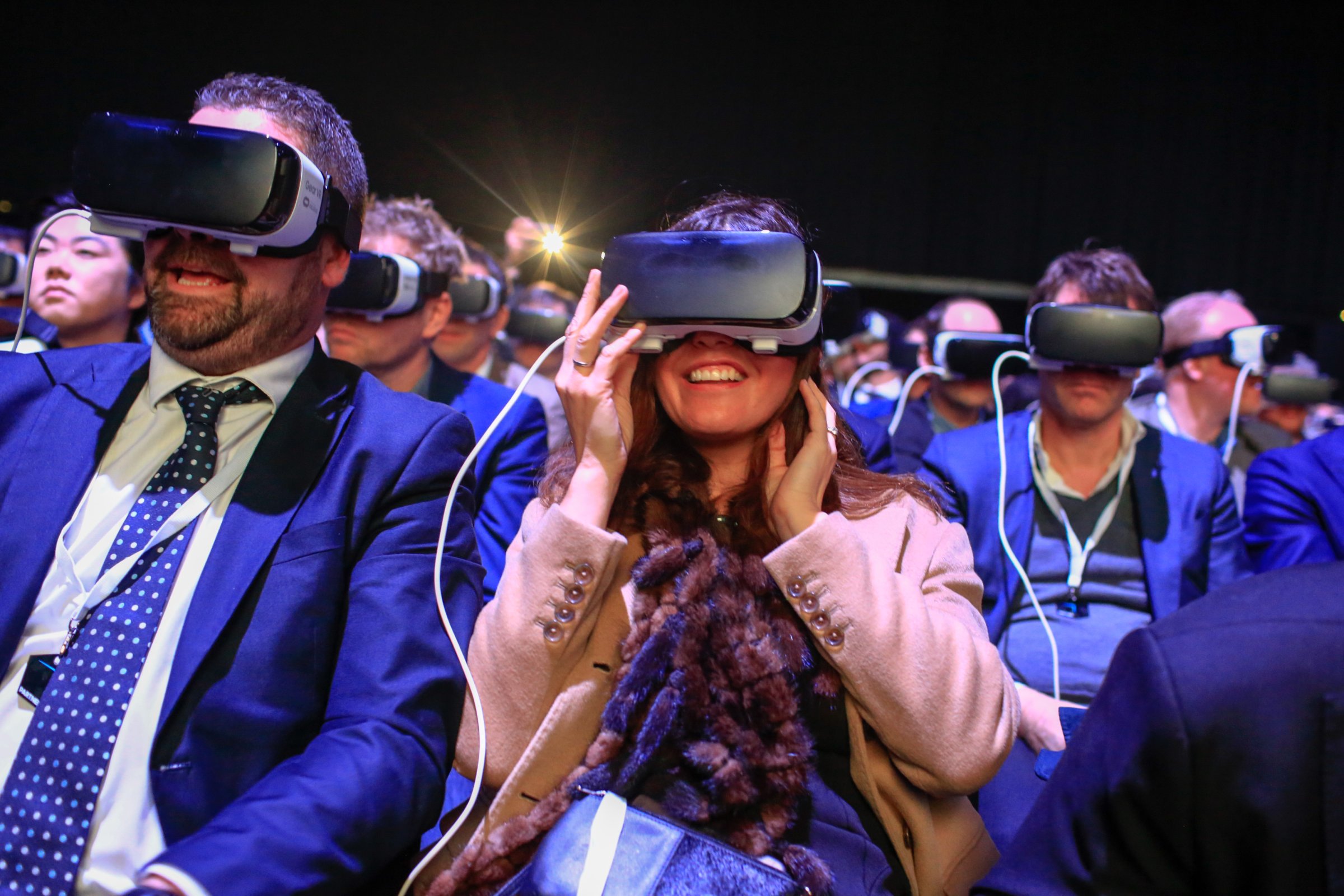
Strap on a rectangular black headset, and you can traverse a sunken ship at the bottom of the ocean or climb to the top of a snowcapped mountain. That’s the promise of virtual reality (VR) headsets, like the Oculus Rift and HTC Vive.
As impressive as the technology already is, many believe it’s still in its early days. That’s because previous virtual reality-style efforts have flopped in the past. (Nintendo’s Virtual Boy comes to mind.) But the latest crop of gadgets are seen as more promising, thanks to their much-improved graphics, head-tracking abilities and more.
Few have watched virtual reality evolve as closely as the companies building the hardware that powers it. TIME sat down with Frank Azor, general manager of the Dell-owned gaming PC manufacturer Alienware, and Nelson Gonzalez, Alienware’s cofounder and former CEO, to discuss what they have learned about VR and where they believe it’s headed. Below are the key highlights from our conversation.
Read more: Virtual Reality Buyers Guide: Oculus Rift vs. HTC Vive vs. Samsung Gear VR
Virtual reality will get more physical
Anyone who’s seen or tried the HTC Vive knows that some physical activity is involved. The Vive and its two controllers are equipped with sensors that allow players to swing a virtual golf club or wield an imaginary paintbrush.
But what systems like the Vive or PlayStation VR currently lack is a sense of touch. Although it may look like you’re swinging a golf club, the device in your hand still feels like a video game controller. (The Oculus Rift doesn’t yet support any motion controllers, although the company plans to launch such devices later in 2016.) This is going to be one of the first areas in which virtual reality will improve, says Gonzalez.
“The next evolution of VR would be where you participate physically in that VR world,” Gonzalez said. “And not just sitting down; if you’re a quarterback, you actually get to throw a football, and you can interface with the team. So that kind of stuff, it’s there, it’s going to happen.”
Incorporating better touch controls will only be the start. Azor believes future VR devices could refine concepts first introduced as far back as 1962 with the Sensorama, which incorporated elements like wind and smells.
“Headsets today are doing an excellent job at catering to your visual senses, and a little bit of audio as well,” said Azor, also Alienware’s fourth employee. “Well that’s just two of the senses . . . Once you begin catering to the rest of the senses, like what we feel body-wise, temperature-wise, and smell, the reality factor of virtual reality [becomes] stronger and the virtual piece begins to fade.”
It’s unclear exactly how — and if — technologies like those Azor described will ever take shape. But some companies are certainly trying. Leap Motion, a startup which launched a motion-sensing camera for computers in 2013, is now building technology for interacting with VR environments without a controller. Startup Thalmic Labs also makes an armband capable of controlling electronic devices through gestures that works with the Rift.
Read more: Review: Oculus Rift is expensive, complicated, and totally wonderful
VR is an industry-wide effort
The Oculus Rift will likely be remembered as the first modern virtual reality headset. But it takes more than just one device to impact the industry in a meaningful way, says Azor.
Azor draws comparisons to the way the gaming industry developed over the past decade. PCs became better equipped to deliver high-end gaming experiences as companies like Intel, AMD, and Nvidia developed more powerful chips and graphics processors. Games became more accessible on PCs as companies like Steam created platforms for easily buying and browsing content.
“Everyone rallied around [the PC gaming] industry and now we have what we have today,” he said. “VR is the same type of thing; no one company can solve all of the problems.”
A wireless Rift or Vive won’t happen soon
There are two classes of virtual reality devices available today: cheaper, portable devices like the Samsung Gear VR and Google Cardboard, and beefier, expensive systems that offer more immersive experiences like the Rift and the Vive. The former plug into your smartphone to deliver VR that’s wireless and convenient, while the latter must be tethered to a PC to power their higher-end performance.
It’s unlikely that we’ll see a high-performance device like the Rift go wireless anytime soon, mostly because wireless technology isn’t advancing at the same pace as VR hardware.
“By the time we solve that, as an industry we’re going to want to give you version two of the product, which is going to become the new benchmark,” Azor said. “Wireless technology is on a different schedule, that’s where the issue comes in . . . The latest and greatest will be wired for a fair amount of time moving forward.”
More Must-Reads from TIME
- Inside Elon Musk’s War on Washington
- Meet the 2025 Women of the Year
- The Harsh Truth About Disability Inclusion
- Why Do More Young Adults Have Cancer?
- Colman Domingo Leads With Radical Love
- How to Get Better at Doing Things Alone
- Cecily Strong on Goober the Clown
- Column: The Rise of America’s Broligarchy
Contact us at letters@time.com